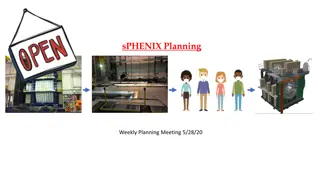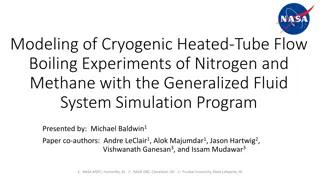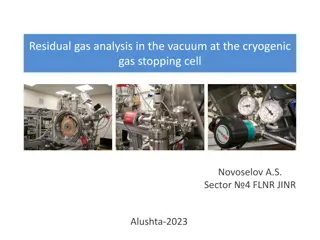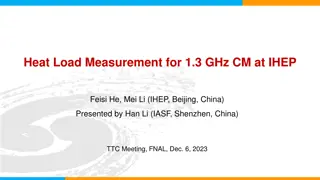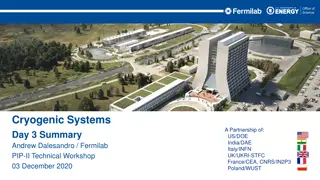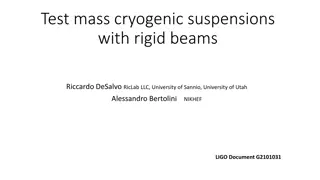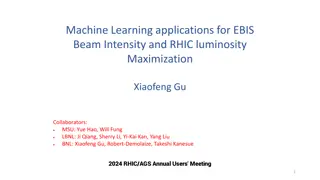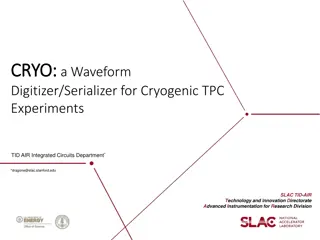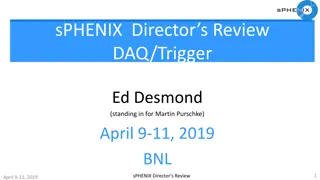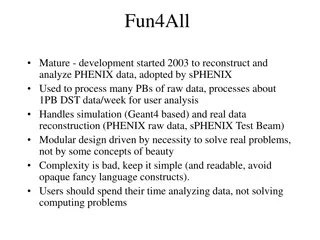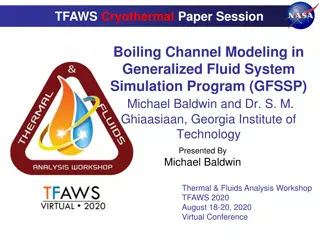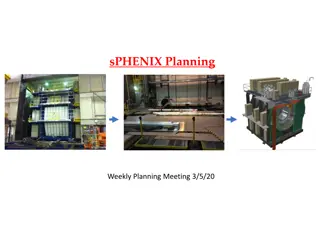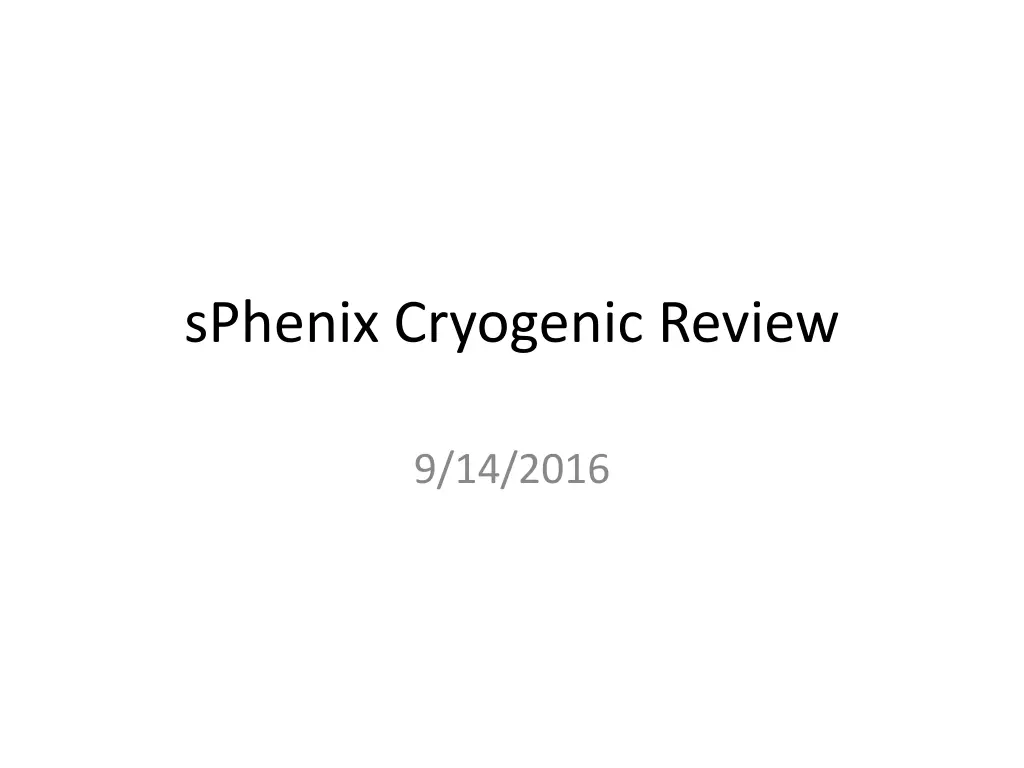
Cryogenic Requirements and Cooling Systems for sPhenix Detector
Explore the detailed cryogenic requirements and cooling systems for the sPhenix detector, including control temperature gradient, liquid helium supply flow, cooldown procedures, testing protocols, and summer shutdown measures. Learn about the necessary equipment, capacities, and processes to maintain optimal performance during various operational phases.
Download Presentation

Please find below an Image/Link to download the presentation.
The content on the website is provided AS IS for your information and personal use only. It may not be sold, licensed, or shared on other websites without obtaining consent from the author. If you encounter any issues during the download, it is possible that the publisher has removed the file from their server.
You are allowed to download the files provided on this website for personal or commercial use, subject to the condition that they are used lawfully. All files are the property of their respective owners.
The content on the website is provided AS IS for your information and personal use only. It may not be sold, licensed, or shared on other websites without obtaining consent from the author.
E N D
Presentation Transcript
sPhenix Cryogenic Review 9/14/2016
sPhenix Cryogenics Requirements Control temperature gradient to no more than 40K during cooldown/warmup 7.5 g/s of liquid helium supply flow to do forced feed to solenoid circuit. Shield flow 4.5K vapor: 0.3 - 0.6 g/s. Current lead cooling: 0.1 - 0.6 g/s. Ramp with current Cooldown/warmup rate 300K to 4K in 7 days [3 weeks of 45K supply during RHIC 45K wave cooldown] Ability to disconnect cryogenic lines to move the detector into assembly hall 500L phase separator/ reservoir to ramp down magnet when cryogenic supply is lost to remove heat leak from the long 4.5K supply transfer line Hold at <100K during summer shutdown to limit thermal cycling on solenoid Precool to 100K before RHIC run startup Testing with 500L dewars: Summer Shutdown Testing 4.5K in IP location Summer Shutdown Testing 4.5K in assembly hall location Summer Shutdown Testing 4.5K, short duration and low current test e.g. 4 hours, 1000A Summer Shutdown Testing 4.5K, full current test 4650A
Control temperature gradient to no more than 40K during cooldown/warmup COLD SUPPLY AND CAPACITY RHIC: Cold helium: S header during RHIC 45K wave, during 4.5K wave 500L dewars during shutdown LN2 supply during shutdown WARMUP SOURCE AND CAPACITY o Gas heating capacity Electric Heater Ambient vaporizer o Source of gas flow RHIC cold / with Heat exchanger Local 1008B circulation compressor. Requires water at 20 GPM HEAT EXCHANGER To use RHIC cold supply during cooldown/warmup
Cooldown Requirements without RHIC plant LN2: ~4000 Gallons LHe: ~ 5000 Liters Small helium Compressor during summer IP4 56MHz compressor in 1004E e lens compressor in 1010 mezzanie ERL 912/NSLS-1 install 1008B if room available Return Heater Allows summer testing with Dewars Summer keep cold
Keep cold during summer shutdown Helium circulation loop with LN2 feed ia transfer line and exchanger PROs 300K 100K cooldown and warmup independent from RHIC CONS Higher cost LN2 FLOODED MODE Using cryocooler with condenser surface CONS No 300K 100K cooldown/warmup with cryocooler Pump and purge PROs All equipment will reside on platform. Air cooled compressor More economical
SPHENIX: MAGNET: Cryogenics System diagram: RHIC Interface Option SPHENIX SC SOLENOID CRYO 10


